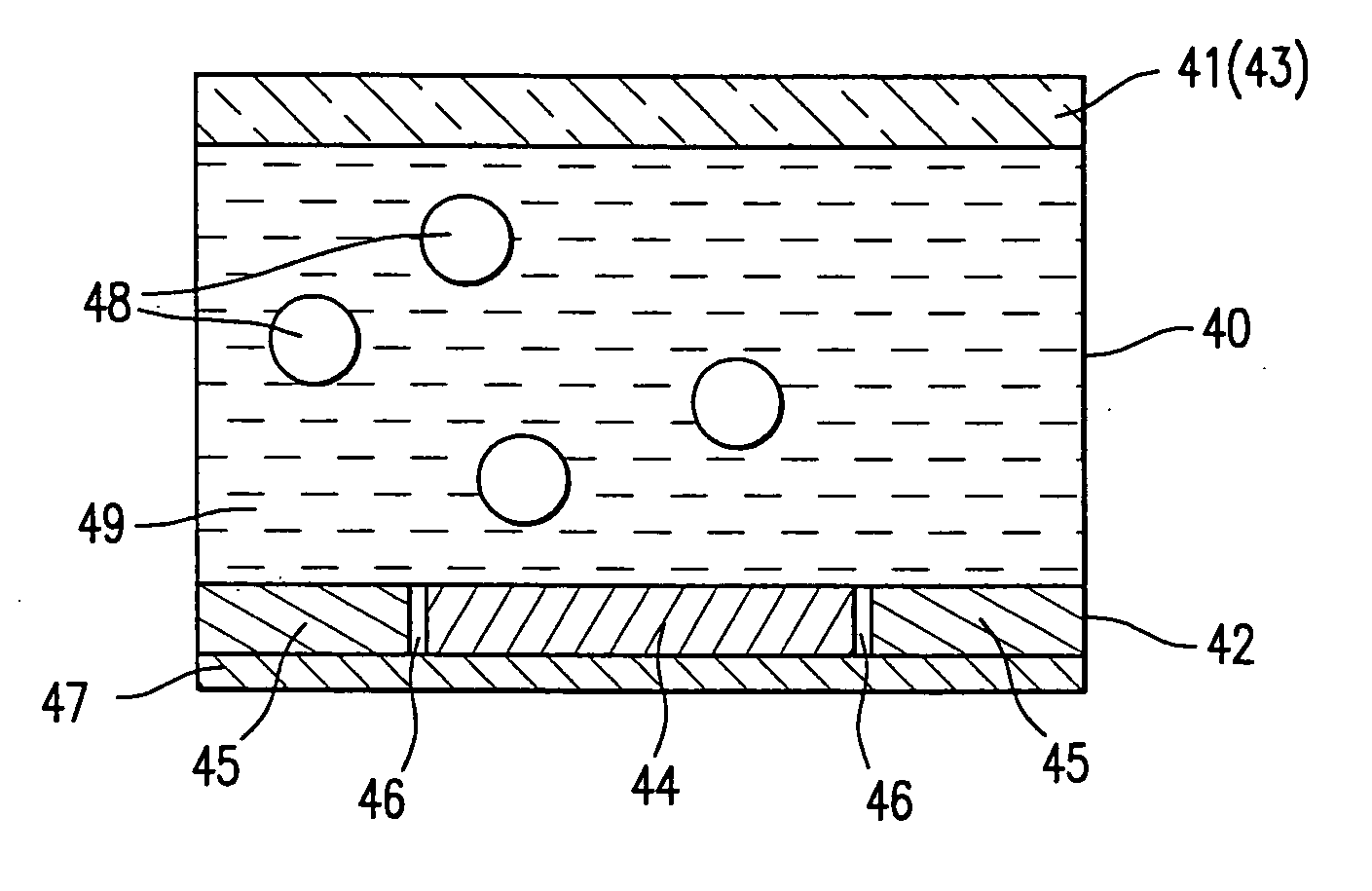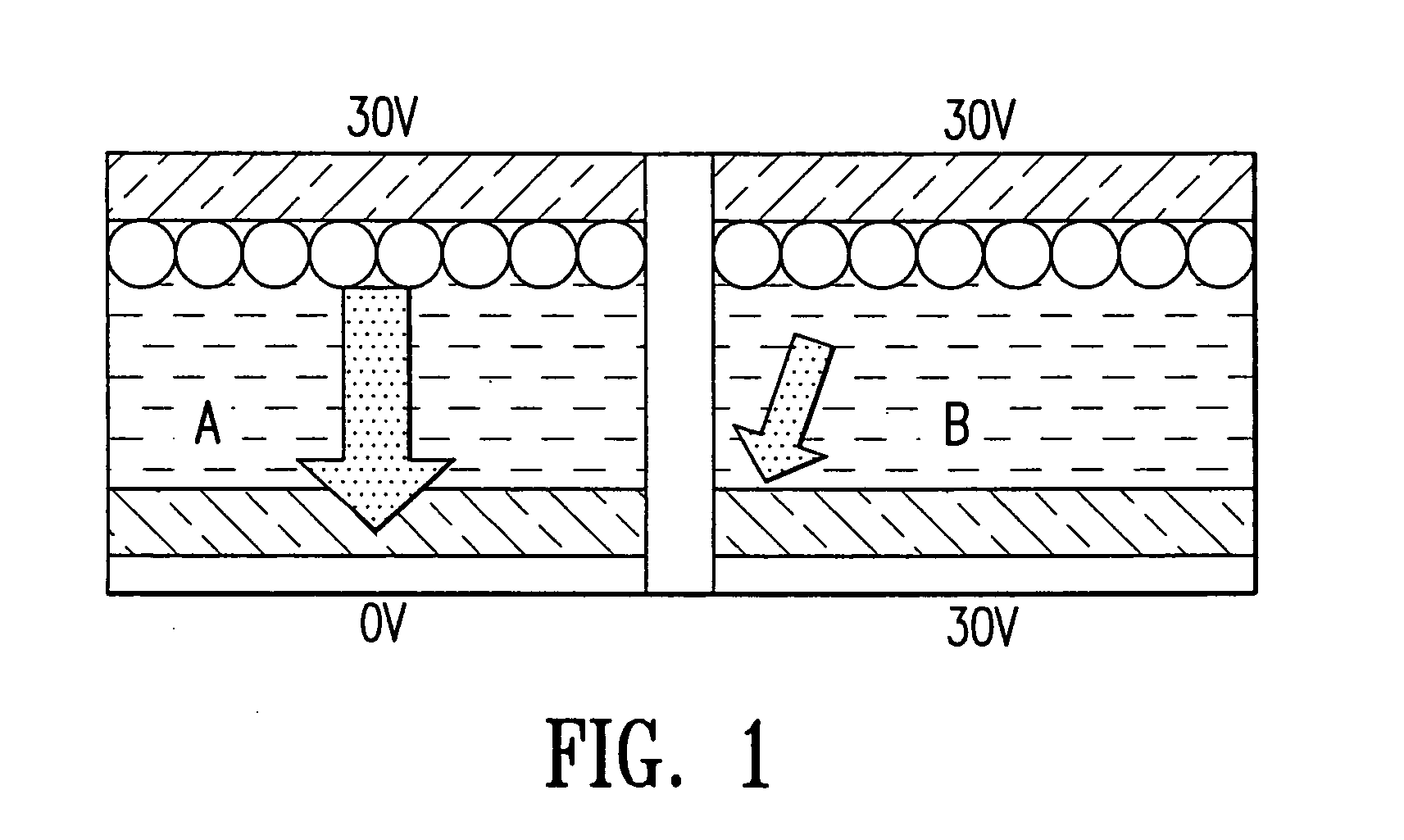Electro-magnetophoresis display
a technology of electromagnetic field and display, applied in the field of electromagnetic field, can solve the problems of significant increase in display driving voltage or a decrease in switching rate, affecting the bias across, and affecting the accuracy of the display, so as to prevent undesired movement of charged particles, avoid the effect of cross-talk and/or cross-bias, and high color quality
- Summary
- Abstract
- Description
- Claims
- Application Information
AI Technical Summary
Benefits of technology
Problems solved by technology
Method used
Image
Examples
Embodiment Construction
[0025] A detailed description of representative embodiments of the invention is provided below. While the invention is described in conjunction with representative embodiments, it should be understood that the invention is not limited to these embodiments. In order to meet the specific requirements of a particular EMPD, the design and dimensions of the features may vary and all such variations are within the scope of the present invention. To illustrate this invention, numerous specific details are set forth in the following description. The present invention may be practiced according to the claims without some or all of these specific details. For the purpose of clarity, technical material that is known in the technical fields related to the invention has not been described in detail so that the present invention is not unnecessarily obscured.
I. Definitions
[0026] Unless defined otherwise in this specification, all technical terms are used herein according to their conventional ...
PUM
| Property | Measurement | Unit |
|---|---|---|
| driving voltage | aaaaa | aaaaa |
| voltage | aaaaa | aaaaa |
| voltage | aaaaa | aaaaa |
Abstract
Description
Claims
Application Information
 Login to View More
Login to View More - R&D
- Intellectual Property
- Life Sciences
- Materials
- Tech Scout
- Unparalleled Data Quality
- Higher Quality Content
- 60% Fewer Hallucinations
Browse by: Latest US Patents, China's latest patents, Technical Efficacy Thesaurus, Application Domain, Technology Topic, Popular Technical Reports.
© 2025 PatSnap. All rights reserved.Legal|Privacy policy|Modern Slavery Act Transparency Statement|Sitemap|About US| Contact US: help@patsnap.com



